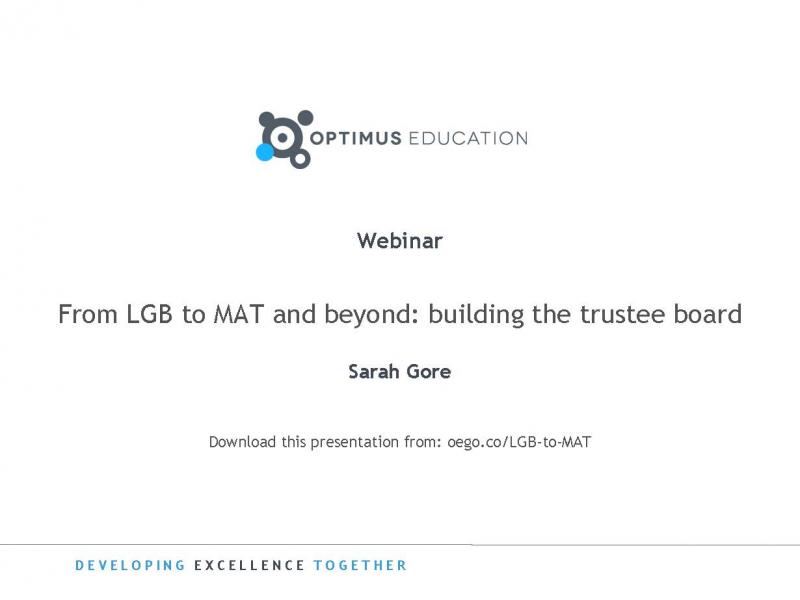When governors are so often blamed for poor inspection judgements, is it any wonder that schools struggle to get committed volunteers through the door?

When preparing for a Section 48 inspection I have to read a number of documents, including the school’s most recent Ofsted report.
Recently, I encountered a school that had been through difficult times. Leadership had lost its way and standards had fallen. Although the school required improvement (and was therefore not a ‘school causing concern’), the section of the report dealing with governance was damning.
‘Governors’, it declared, ‘have presided over this decline’. Such harsh words are frequently used without consideration of their impact. When I met the chair of governors, it was clear that he had worked unceasingly for the school and community for many years.
Stung by Ofsted’s condemnation, he stepped down.
Can we afford to discard committed governors who so willingly serve their school and community? This school was on the up: it had turned a corner and the perfectly reasonable review of governance required by Ofsted had inspired and reinvigorated them.
Governance certainly needed a shake-up, but it did not need grinding down. And this is one of the reasons why there is a crisis not just in the recruitment of teachers and leaders but also of governors.
Let’s be clear: being a school governor – or a trustee - is an important role, carrying a considerable burden of responsibility. It is also voluntary.
Whatever their motives, governors are dedicated, committed volunteers who are simply giving something back
All over the country, men and women are giving freely of their time in the service of their schools. Some do it because, as parents, they have a vested interest; others do it because it’s good professional development and potential employers like a record of public service.
Whatever their motives, governors are dedicated, committed volunteers who are simply giving something back.
There has been some discussion of paying governors, but as soon as the work is remunerated, it ceases to be the noble act it is at the moment and becomes just a job.
And, as soon as there are paymasters, so those being paid lose their independence.
School governance must continue to be voluntary if it is to be truly effective, yet this makes it more difficult to recruit. Why would people volunteer for the role and the responsibility if they are not valued?
It was former HMCI, Sir Michael Wilshaw, who spoke of ‘too many governors not being fit for purpose’ and suggested that paying chairs and vice chairs would attract the right candidates.
But Wilshaw’s approach was flawed – he did not want to simply reward with pay – it was a control mechanism, a holding to account. He was not prepared to allow the time for natural evolution.
As the duties of governors have become more demanding, requiring higher levels of knowledge, so those governors who lacked the insight, experience and willingness to find out have fallen by the wayside.
Yes, this has left a recruitment gap but, look at most governing boards today and it is clear that there is a professionalism that was absent previously.
The trick of it, then, is how we attract the right people.
The induction of a new governor should be as thorough as possible, equipping them with all the knowledge and skills necessary to hold their school to account.
Our new governor induction pack includes questions to ask of your SLT, and advice for the dreaded first governor meeting!
As the headteacher of five different primary schools I have worked with many governors, and can report that, while recruitment in areas of high social deprivation is more challenging than in areas of greater affluence, it is still possible.
That said, it might take longer to find the people you need.
Not only are governors an active part of the school’s leadership but, as individuals, they are making a real and fulfilling contribution
Since my time as headteacher, I have been privileged to chair two primary schools. One was my local school, and I was brought in to fill a recruitment gap and bring ready-made experience to the role. The other was a large, suburban school with many challenges.
In the latter, we are proud to have created a model of governance around four autonomous teams, to which we have been able to recruit people with the relevant skills and knowledge. It works remarkably well. Not only are governors an active part of the school’s leadership but, as individuals, they are making a real and fulfilling contribution.
Having now resigned the chair, after the NGA’s recommended maximum term of six years, our proactive succession planning allowed for a smooth handover to the new chair and to his successive vice chair, both of whom were fully prepared. However, we are still carrying a vacancy that we find it difficult to fill.
So, how do we recruit (often busy) people into school governance? In my authority, there is a significant shortfall which is bound to be replicated elsewhere.
It pays to be proactive. The governors of our local school collaborative have recently commissioned a recruitment film, which we plan to use at local events, make available on our school websites and possibly publish on YouTube. Not only does it focus on the responsibilities and duties of governors, but also on the great privilege that comes with the role.
We have commissioned the film because more conventional routes have not been as successful as we would like.
Nevertheless, to schools with a shortage of governors, it may be worth exploring other possible sources of suitable people.
Governors and trustees can add huge capacity to a school. Wilshaw suggested mandatory training and that makes every sense, but we need to get good volunteers through the door first.
 Building a trustee board
Building a trustee boardWhen recruiting and structuring a trustee board, it is crucial to select the right people with appropriate skills to hold the MAT to account.
In this webinar, Sarah Gore of Academy Ambassadors explores what is involved in making the transition from a local governing body to multi-academy trust structure.